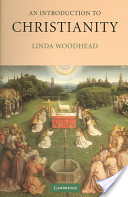There are two types of churches which constitute the visible expression of Christianity in the modern age. For the sake of simplicity let me call these two expressions of the church the non-voluntary and the voluntary models. If these seem initially confusing they should be clearer as soon as you read what follows.
Non-Voluntary Churches

In these mainline churches God was humanized and anything remotely like severity was all but removed. Liberalism led many young people to turn away from divine transcendence toward “human values,” values that were more consistent with liberal social values. Mainline Christianity continually ceased to be confessional and dogmatic, thus becoming a broadly ethical movement with a strong emphasis upon a caring and loving life.
It has often been argued, in a number of popular studies about Christianity’s decline in the West, that liberalism is the primary cause of this religious decline. I think this thesis is at best a half-truth. (What follows is not a defense of liberal theology, per se.) The mainline churches have almost all retained a deep attachment to structures rooted in top-down power. (This is part of the reason for why they are called non-voluntary churches.) These churches have “residual alliances with social power, and their own personal arrangements” (An Introduction to Christianity, 349).
Simply put, hierarchical arrangements are hard to break inside these older expressions of institutional Christian faith and practice. While these churches maintain a commitment to equality and autonomy their structures tell young people something very different when they encounter the church. “They have not, in other words, been able or willing to place the unique individual centre stage and devote their energies to catering for individual spiritual growth” (An Introduction to Christianity, 349). This will become more clear in tomorrow’s post.

But the fact remains, non-voluntary church structures cannot work well in a secular society where freedom and free choice are respected as high values. The mainline churches, especially on the Protestant side, seek to embrace more and more voluntarism in their everyday practice but they do this with varying degrees of success. On the whole many of them have caved in to the moral views that they have witnessed in the secular world. This has been done in the name of reformation but it often has little to do with biblical reformation. It tends, rather, to line up more with their all encompassing attempts to embrace secularity while trying to retain some kind of Christian confession.
For Catholics this is different, though the same social dynamics are at work here as well. Think of it this way – the Catholic Church clearly teaches against artificial birth control and abortion. Yet the overwhelming majority of Catholics in America practice artificial birth control and have abortions at a rate similar to the national average. The Catholic Church has not officially embraced secularism, quite the opposite. But the large majority of American Catholics have gone against the teaching of their church in their actual practice. In effect, they are living as voluntarists even though their church is structurally a non-voluntarist expression.
Related Posts
Comments
Comments are closed.
My Latest Book!

Use Promo code UNITY for 40% discount!






“It tends, rather, to line up more with their all encompassing attempts to embrace secularity while trying to retain some kind of Christian confession.”
That is about the best one sentence summary I’ve heard. I sense a deep hunger to be accepted by the academy and liberal/progressive contexts while retaining, rather than be directed and led by, Christian categories.
Kathryn Elliott Stegall liked this on Facebook.
James H Kim liked this on Facebook.
Interesting statistics related to what you describe: http://www.patheos.com/blogs/friendlyatheist/2013/03/05/new-poll-shows-that-even-catholics-dont-agree-with-catholicism/
I posted this report on my Facebook wall because it so powerfully demonstrates the very point I make in this blog. Thanks Brian.